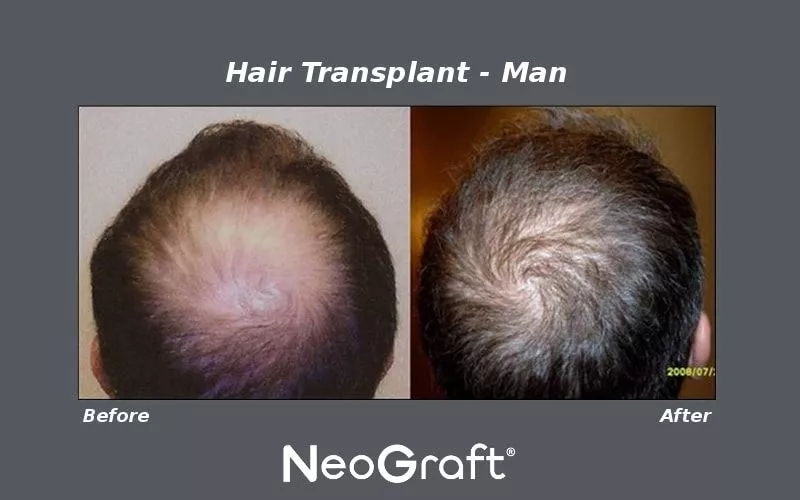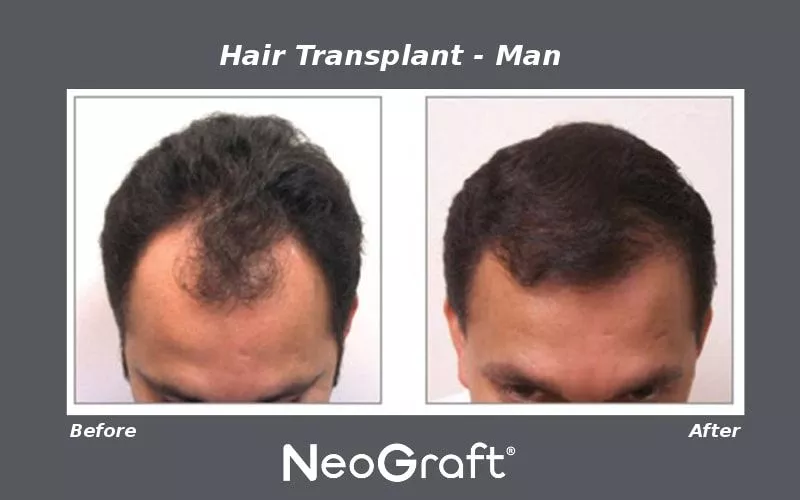Hair transplantation remains the only hair restoration technique that offers permanent and natural results.
In this article, we will be describing the differences between the two hair transplant methods currently in use by plastic surgeons: FUT (Follicular Unit Transplantation) and FUE (Follicular Unit Extraction). These two procedures differ primarily in the way the hair follicles are taken from the donor site.
Both Follicular Unit Transplantation (FUT) and Follicular Unit Extraction (FUE) methods of hair transplantation are done on an outpatient basis under local anesthesia. The length of time for the procedure depends on the extent of hair transplanting to be done. It can take anywhere from a few hours to an entire day to complete the process.

Follicular Unit Transplantation (FUT)
FUT Procedure
The FUT hair transplant method requires the removal of a small strip of tissue containing hair follicles from the back of the head (the donor area). Thousands of follicles are harvested from the strip by technicians using high-powered microscopes. These follicular units are then strategically placed into previously prepared recipient locations around the patient’s head. When placing is complete, the position of all of the grafts will be double-checked.
The FUT method is frequently preferred in situations where there has been a greater amount of hair loss. It allows the greatest number of follicular units to be transplanted during one procedure.
FUT and Scarring
In Follicular Unit Transplantation, the donor area is closed with either absorbable sutures or staples, depending upon the particular situation. A very narrow scar will be visible at the back of the head where the section of scalp has been removed. This scar is usually small and can be concealed by all but very short haircuts. As time goes by, this small scar will fade, becoming less and less visible.
FUT Pain Management
The FUT hair transplant method is reported to have higher levels of discomfort than a transplant using the FUE technique. This is due to the potential swelling in the area where the strip of scalp tissue was removed. The good news is that with either method the discomfort or pain is easily managed with pain medication (as needed) and proper care.
FUT Costs
Both the FUT and FUE are normally charged on a per-graft basis. This means each patient only pays for the number of grafts they need. Generally, the cost of FUT grafts is lower than FUE. However, with the rise in popularity of FUE, the difference is price between the two is less than one might think. As with many such medical procedures, the cost to the patient ultimately depends on their current condition, their needs and goals. Once you have had a consultation with Dr. Ganchi, we will be able to give you a more definitive assessment of your situation and the cost of your various options.
Follicular Unit Extraction (FUE)
FUE Procedure
Follicular Unit Extraction method differs from Follicular Unit Transplantation in that with FUE, each follicular unit (tiny grouping of 1 to 4 hairs) is taken individually from the scalp without the need to remove a strip of scalp tissue. Since these follicles can be extracted on a random basis from a variety of areas, the lessened density in the donor areas is not even noticeable. The physician has more control over the number of follicles removed in a given session, so this hair transplantation method is usually the recommended procedure for patients needing a smaller number of grafts. However, FUE is now being used more frequently in cases of more significant hair thinning and balding. The FUE method has the additional advantage of allowing patient and doctor to split the procedure into more than one session.
FUE and Scarring
Since the hair follicles are removed randomly from various donor areas, the removal is not even noticeable and no visible scar is created.
FUE Pain Management
The Follicular Unit Extraction method has a faster healing time and is less likely to involve post-procedure discomfort or pain. There are no stitches and no scar that must heal.
FUE Costs
As was mentioned in the section on FUT, both procedures are normally charged on a per-graft basis with the patient only paying for the number of grafts they need. Generally, the cost of FUE grafts is higher than FUT. However, the difference in price between the two is less than one might think. As with many such medical procedures, the cost to the patient ultimately depends on their current condition, their needs and goals.

Recovery from Hair Transplant Surgery
After the procedure, a tennis bandage is placed around the head to cover the donor area and a baseball cap or bandana is worn home. No bandages or dressings are required on the transplanted area.
For the first few nights following hair transplant surgery, the patient will need to sleep with his or her head elevated on pillows. Pain medication will be prescribed as needed. Two days after hair transplant surgery, the patient will be able to remove the headband and shower and shampoo their scalp.
Although the patient must be very gentle for the first week after hair transplant surgery, normal shampooing, brushing and hair care can be resumed after two weeks since, by this time, the grafts are firmly in place.
Both hair transplantation methods, FUE and FUT, are relatively simple procedures and patients can usually return to work within a couple of days following the surgery.
Hair Growth
In two months, the transplanted hair follicles will be taking root and going through a resting and growth cycle beneath the visible layer of the skin.
Starting in about month two through month four, new hairs should start coming out. Some patients see this growth in the second month; for some, it will come a month or two later. At this point, the new transplants will look thin.
Starting in about the fifth month following the hair transplant procedure, a considerable amount of hair will be seen emerging from the transplanted areas in the scalp. Toward the end of this period, the transplanted hair will start to thicken and be long enough to warrant grooming.
After a year, patients will have achieved about 80% of the growth of the newly transplanted hairs and in two years the final volume will have been achieved.
Since all this new growth is the patient’s own hair, it will continue to grow naturally.
If you are concerned about balding of areas or thinning hair and would like to discuss hair transplantation, give us a call. We’d love to talk to you about what we can do for you.
